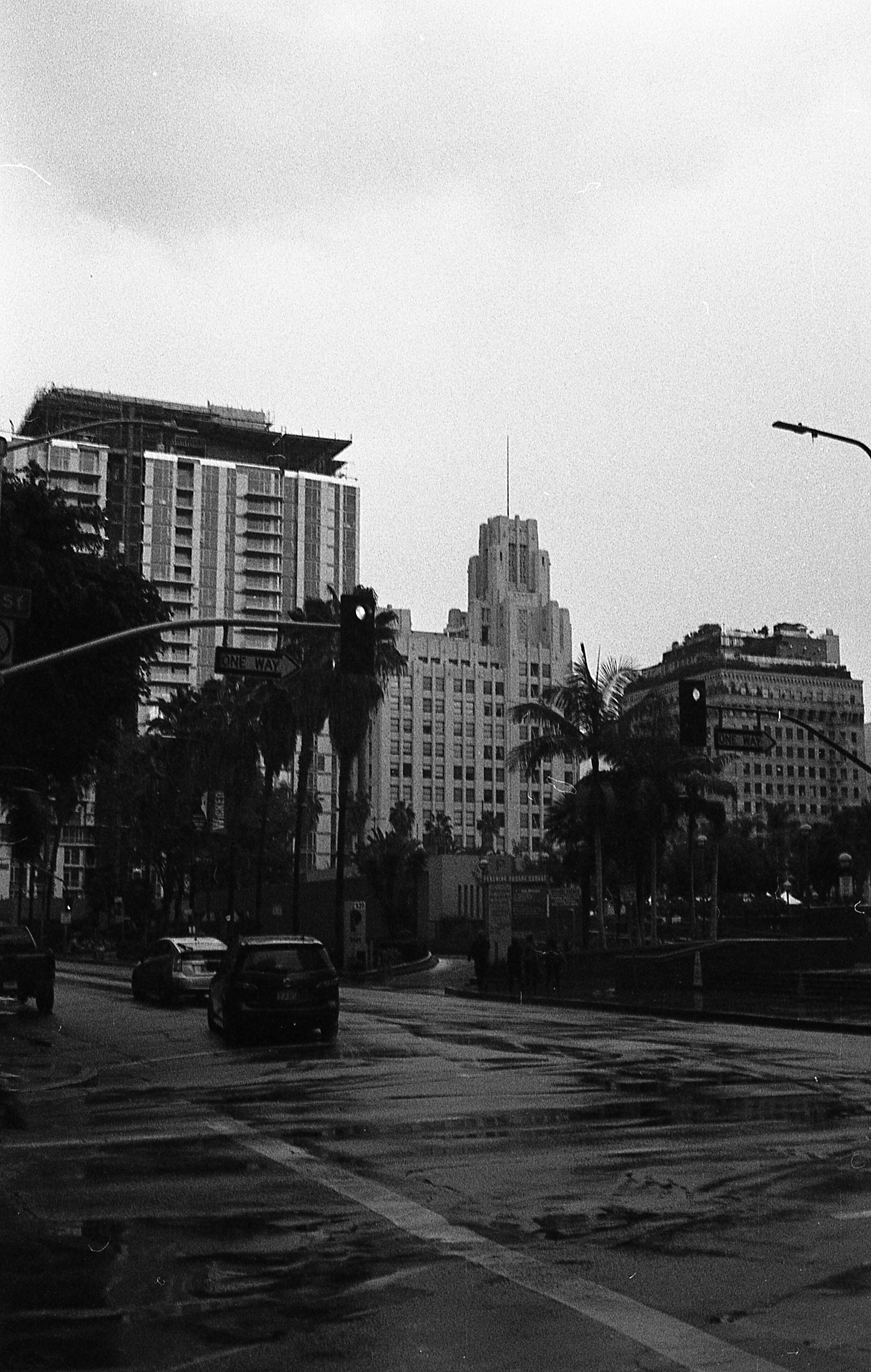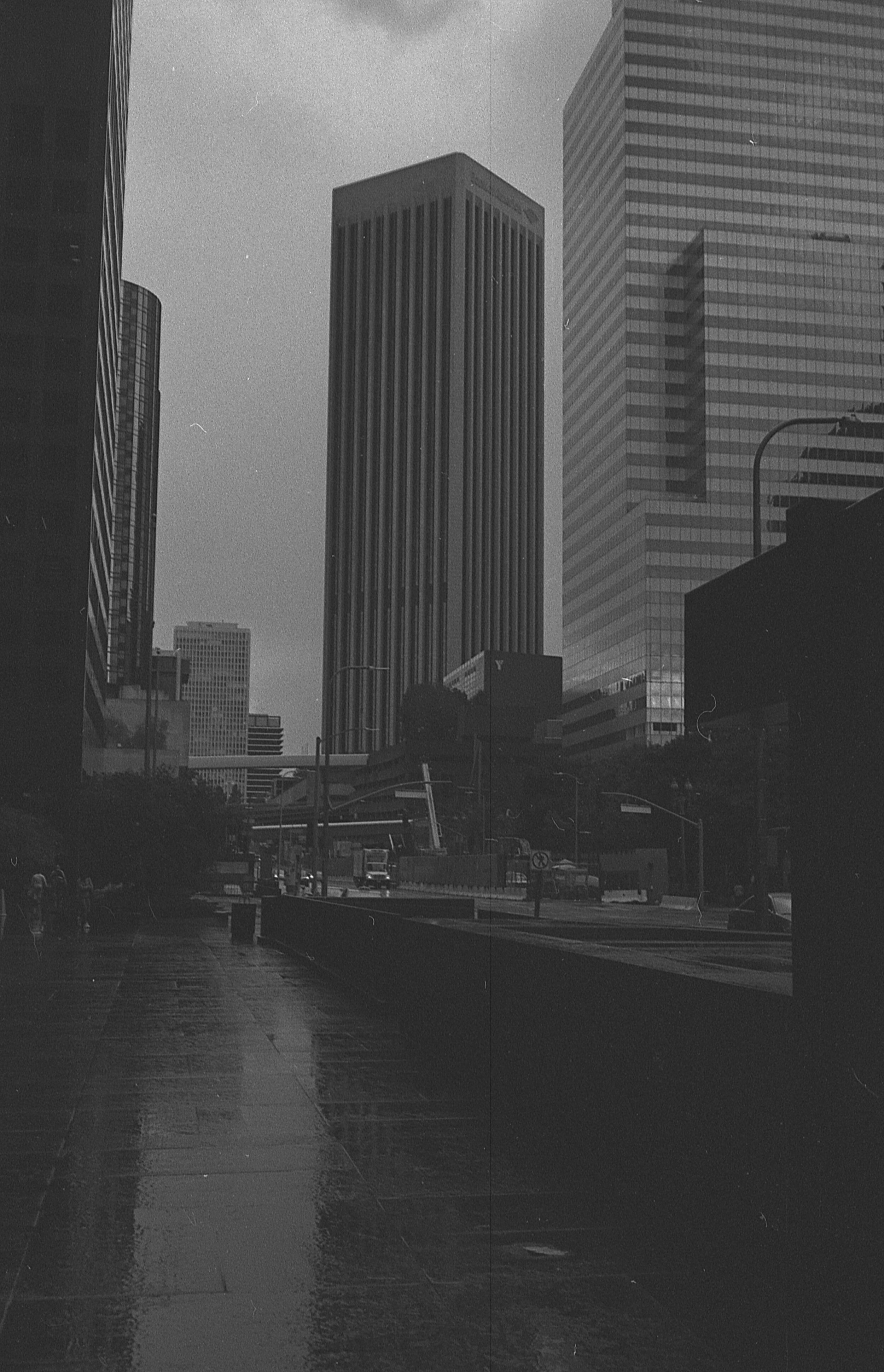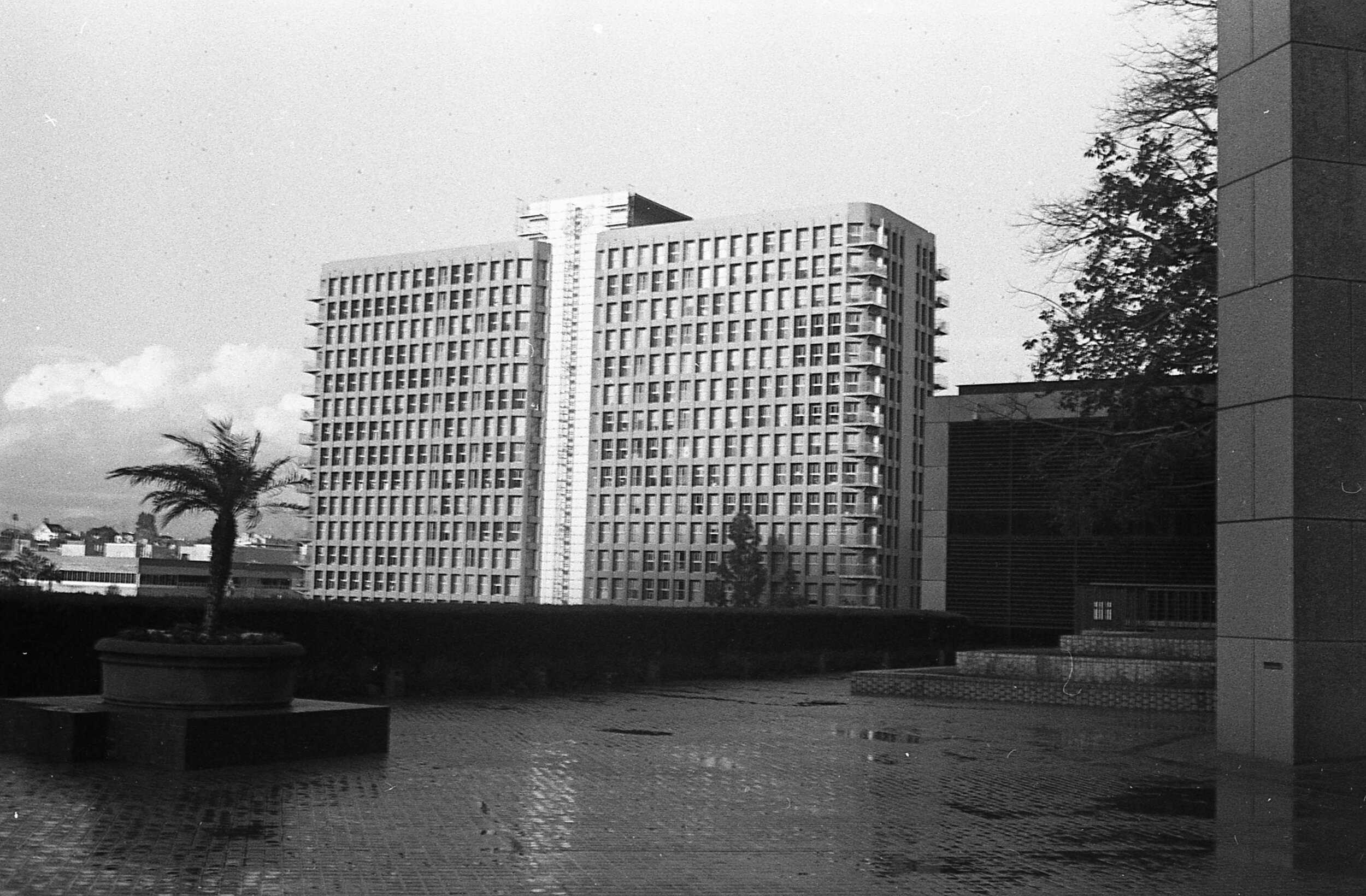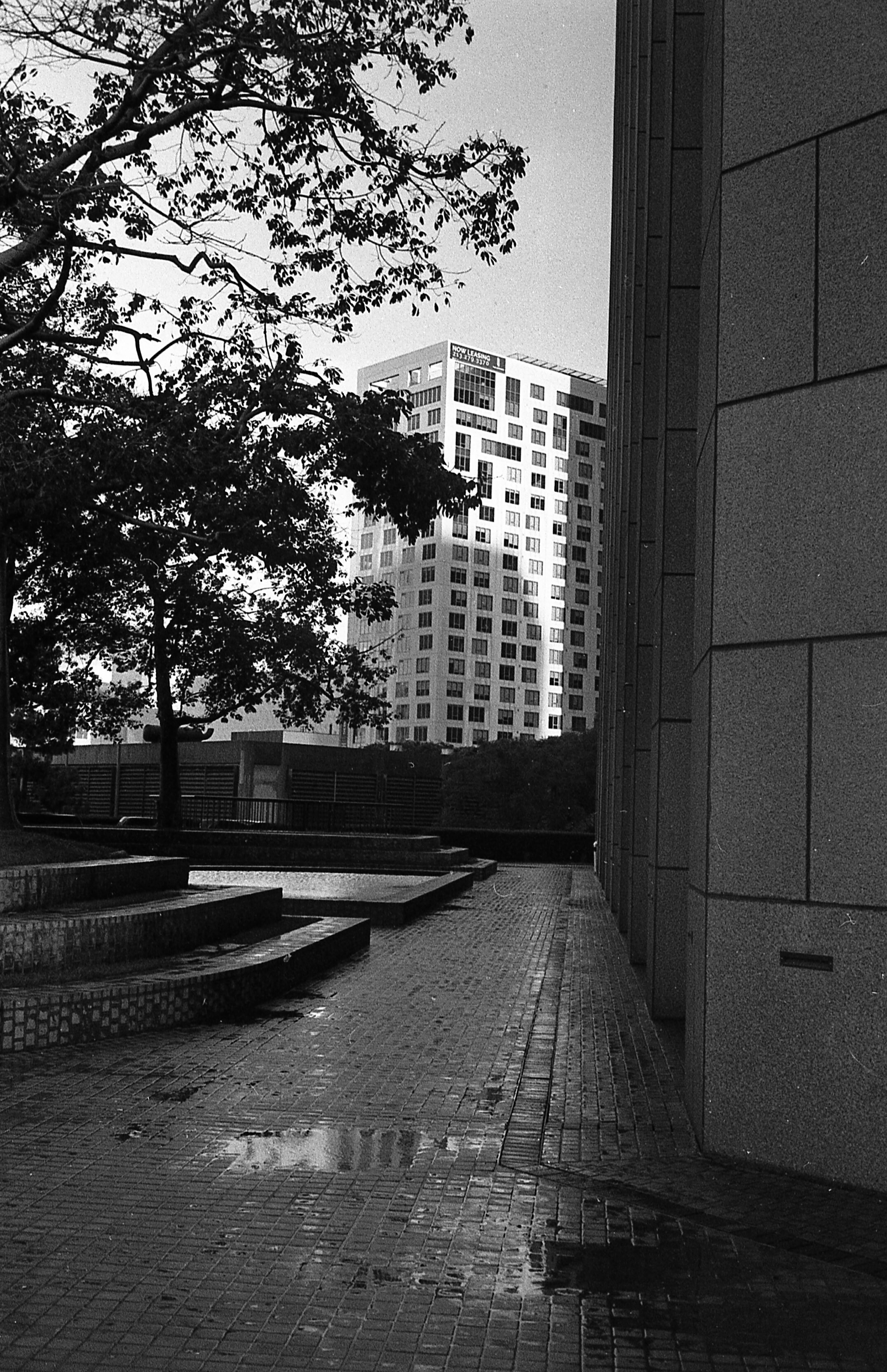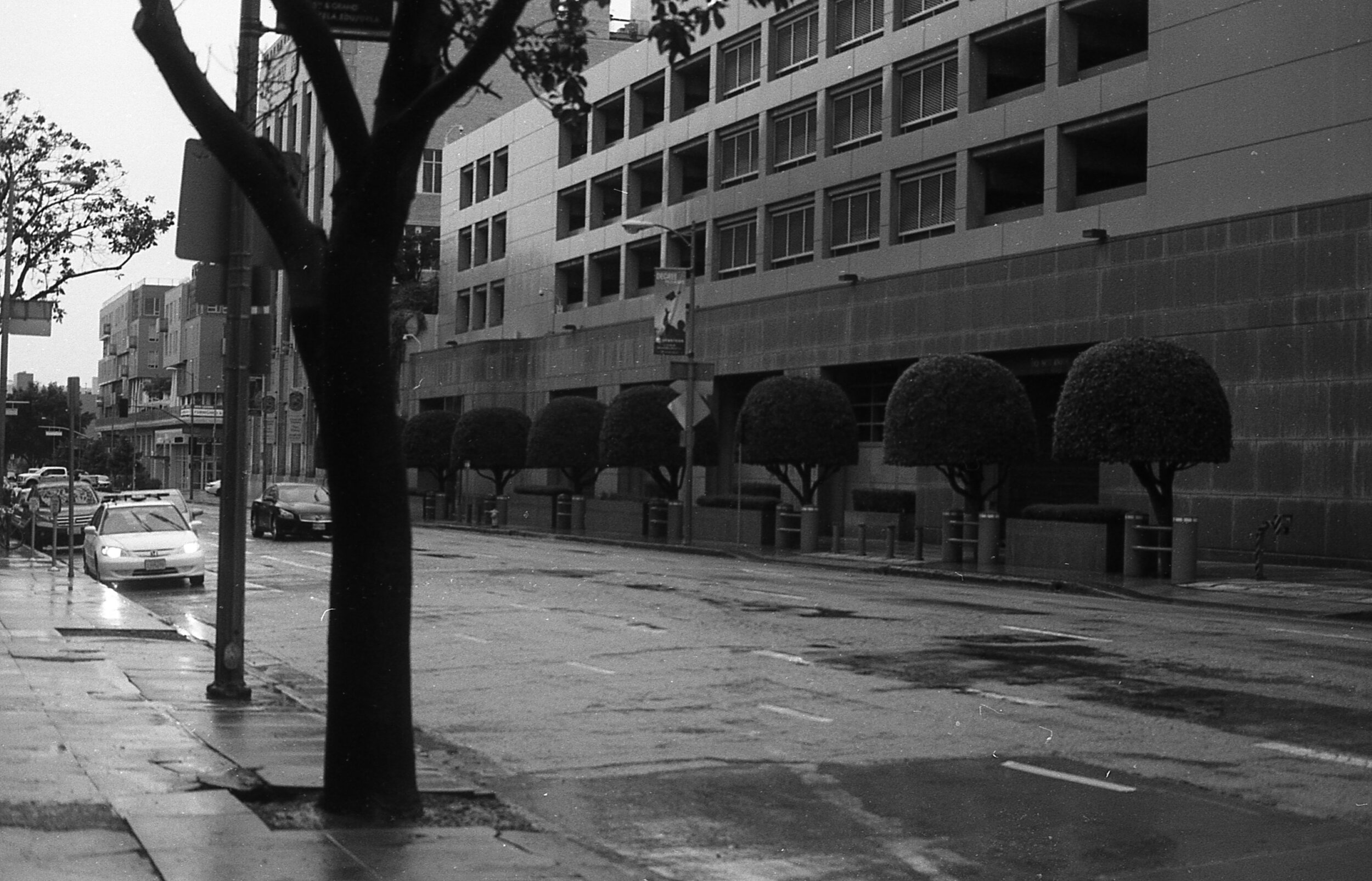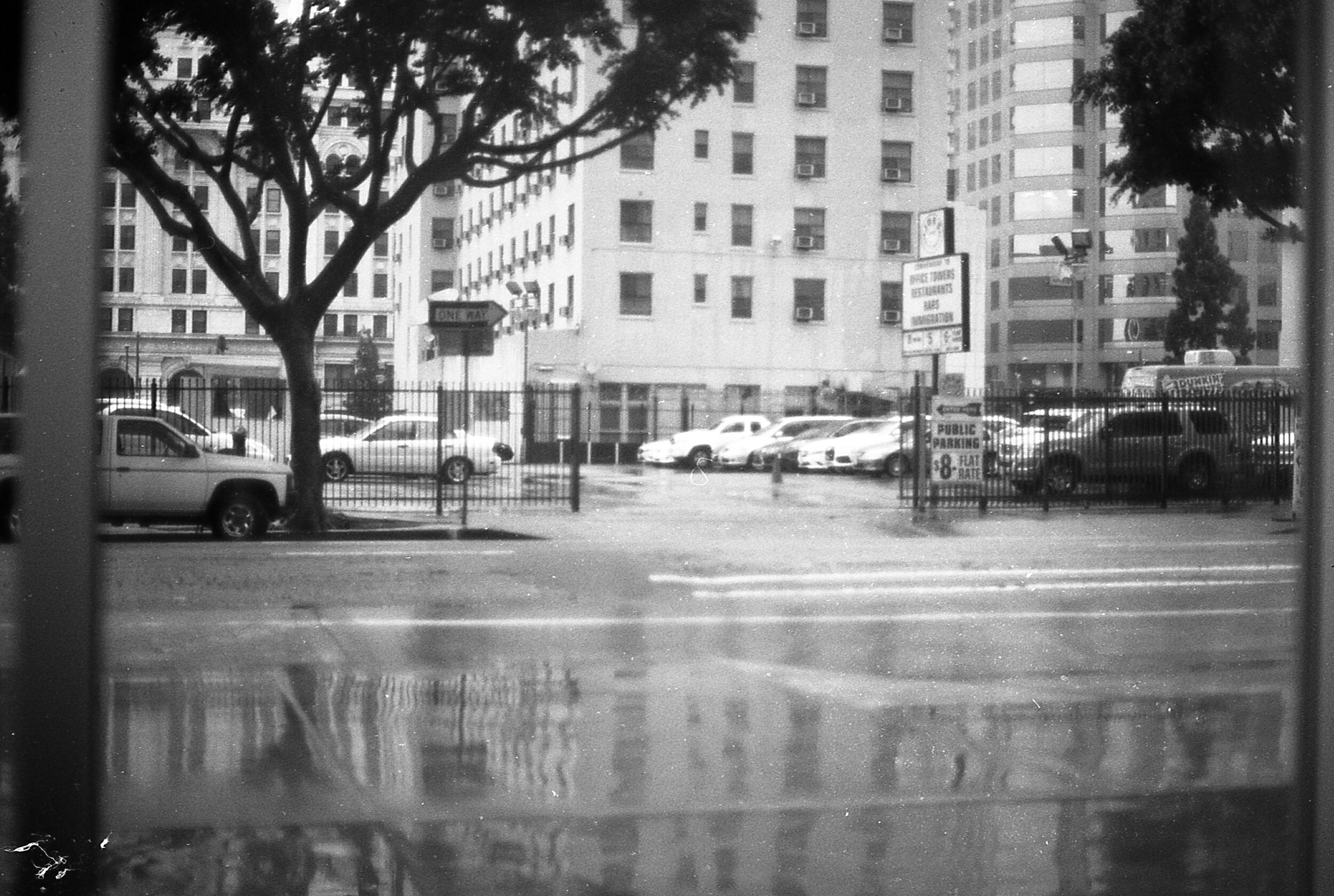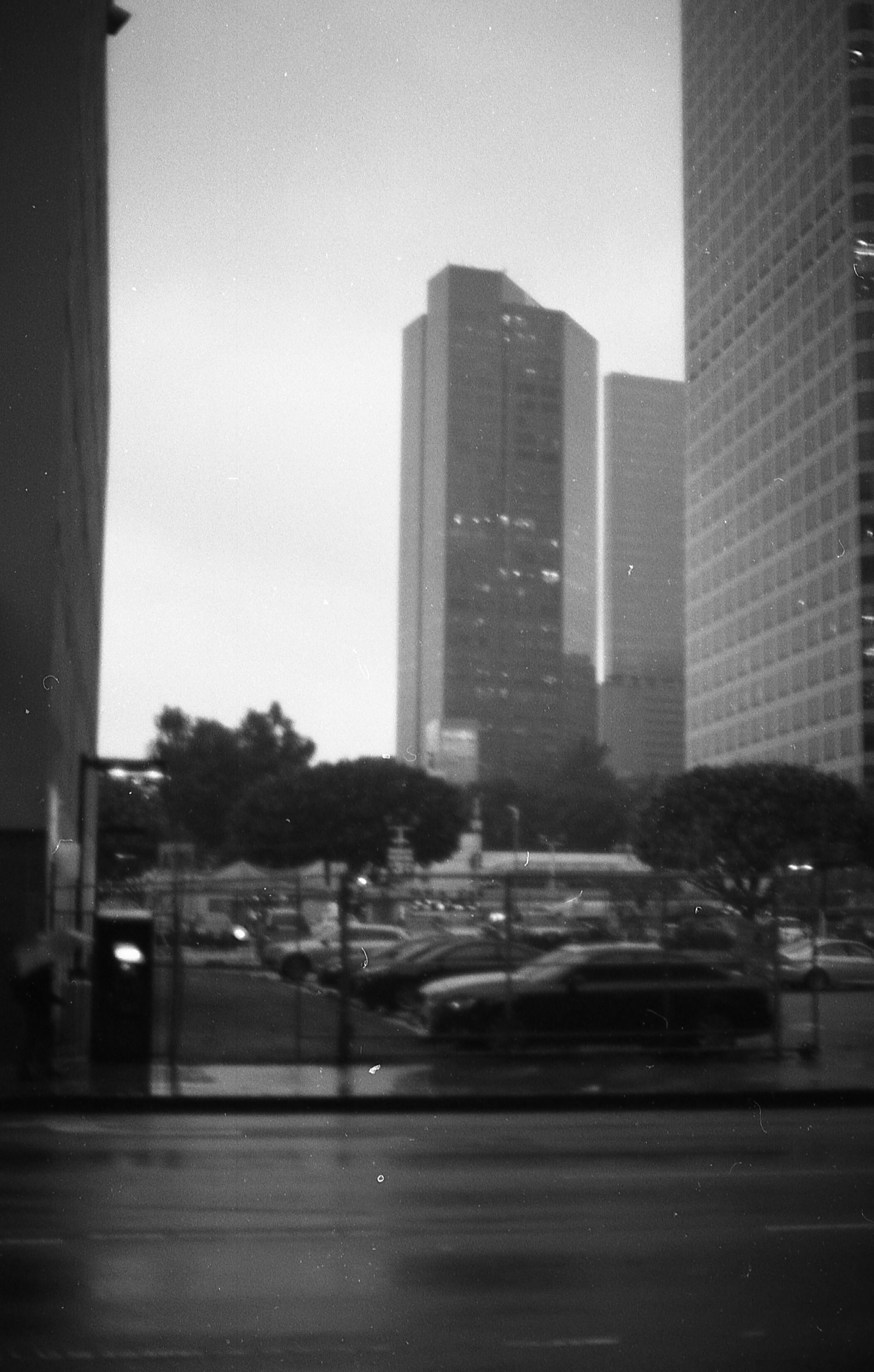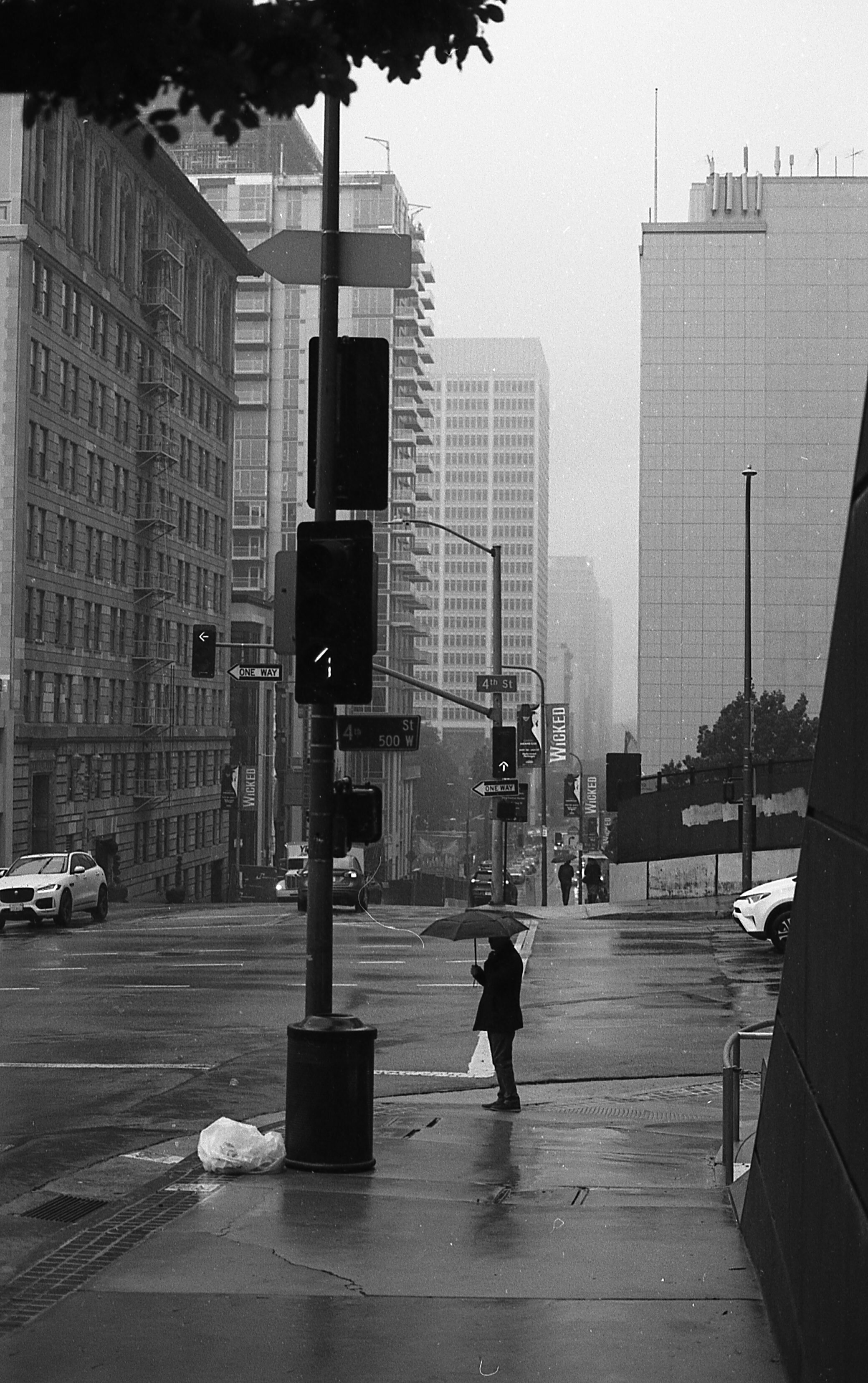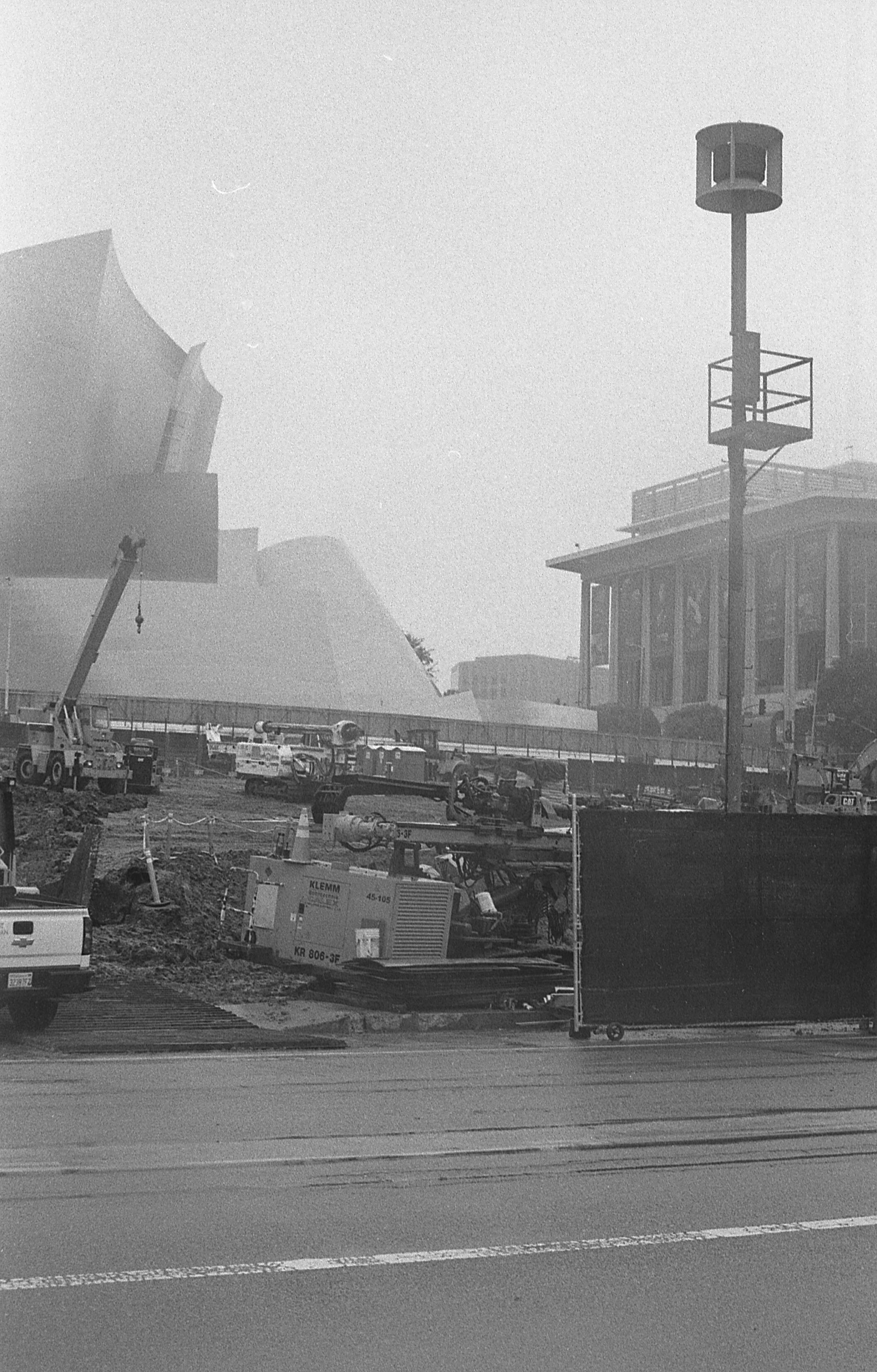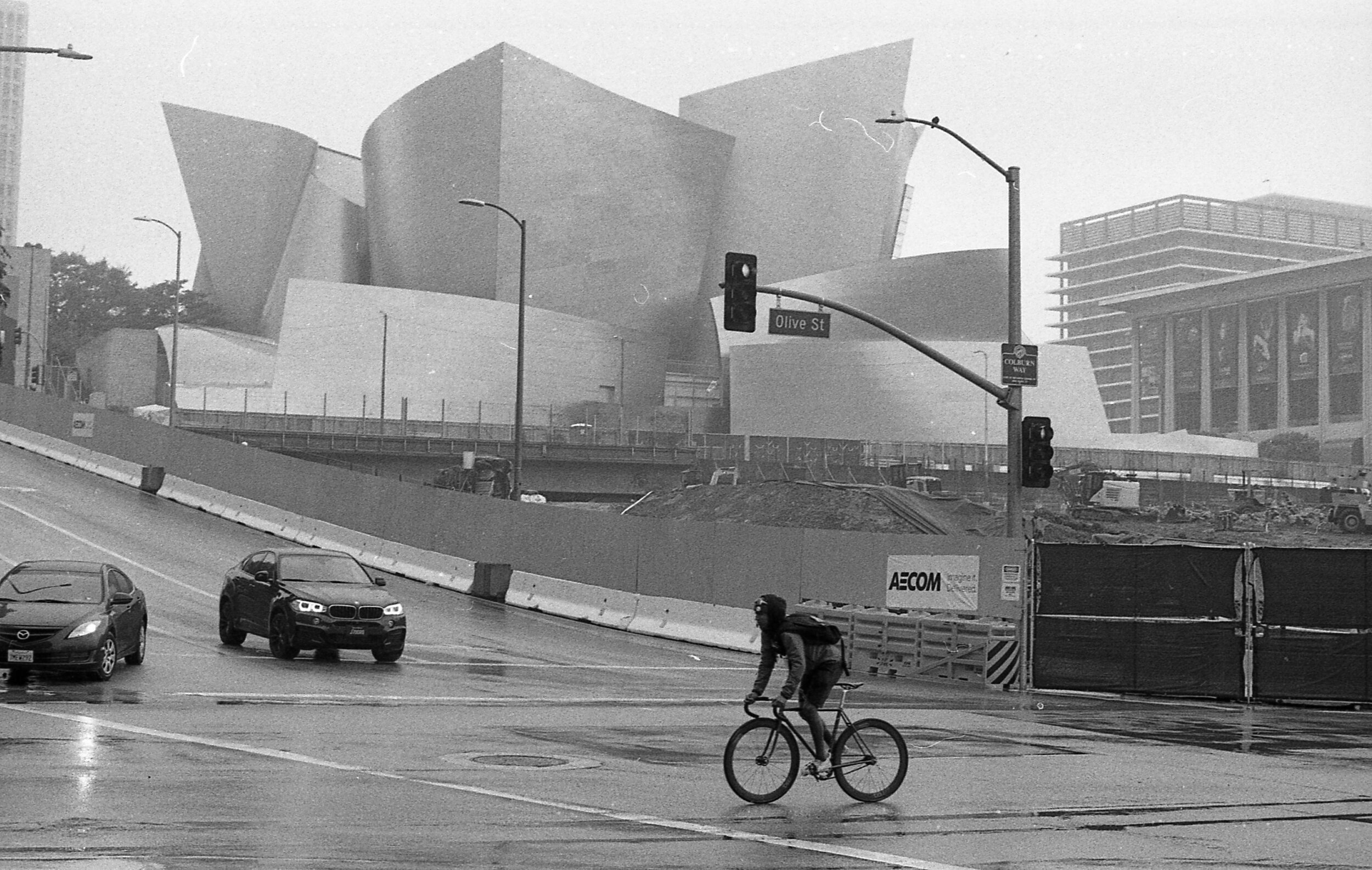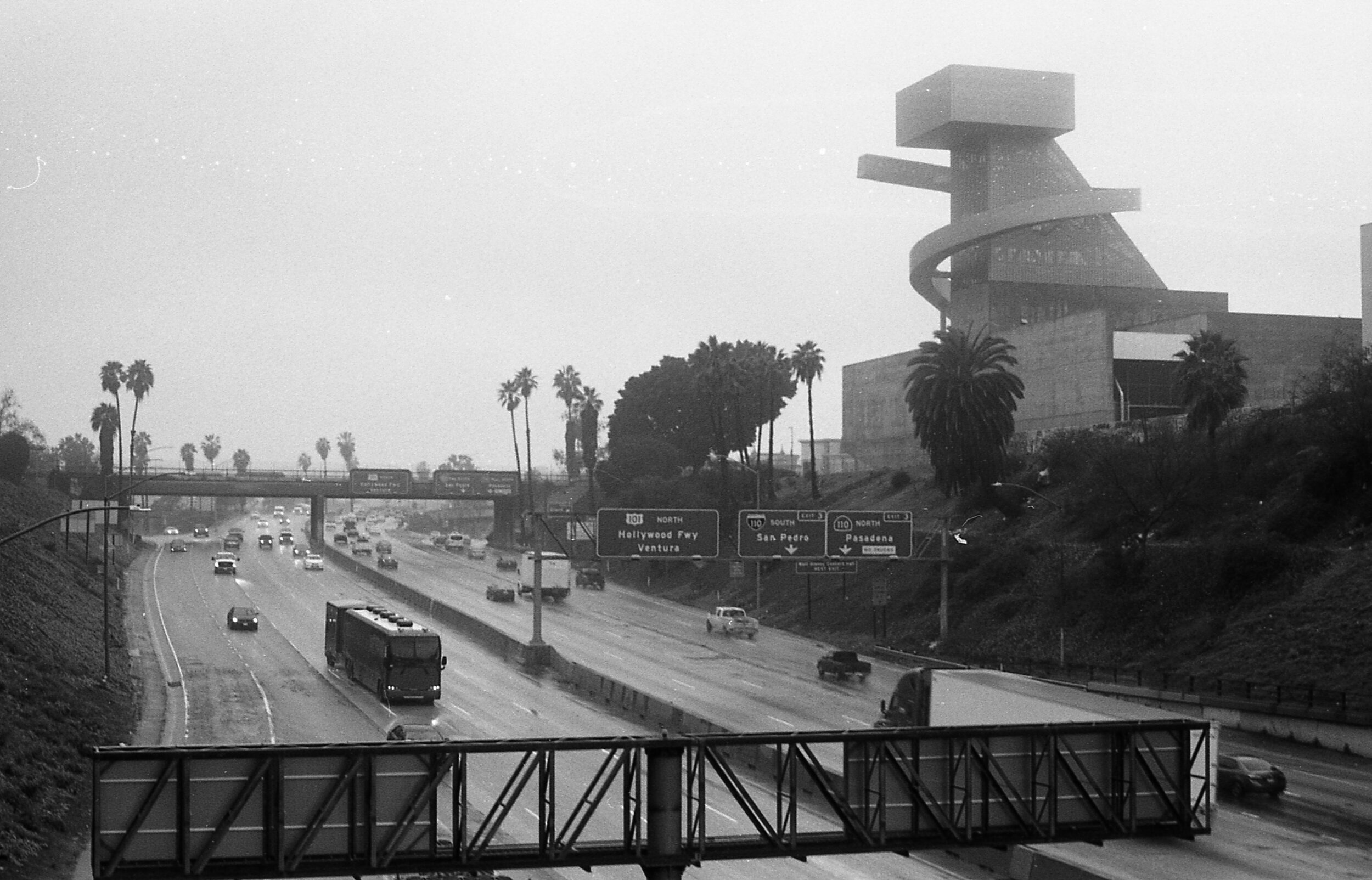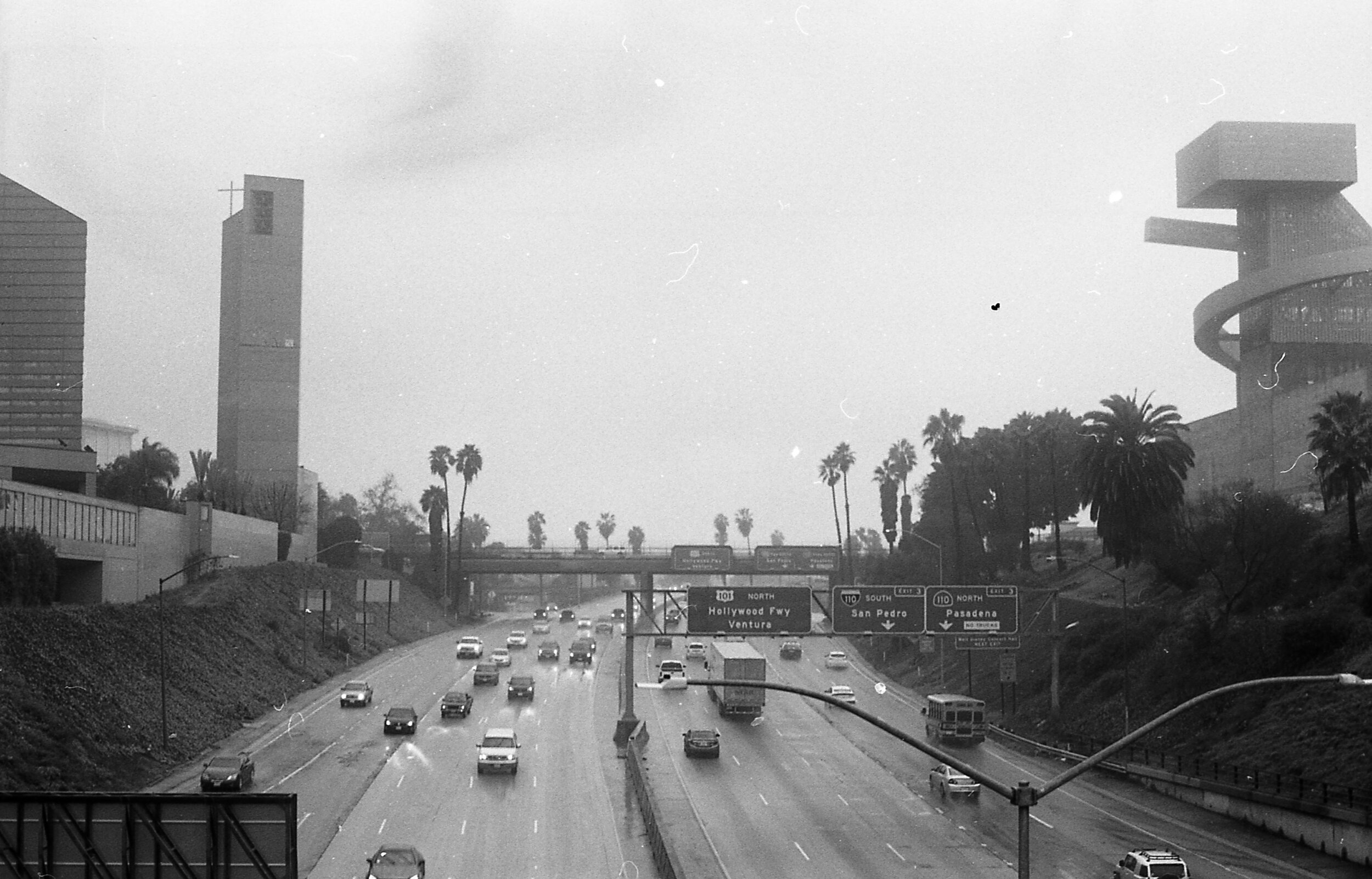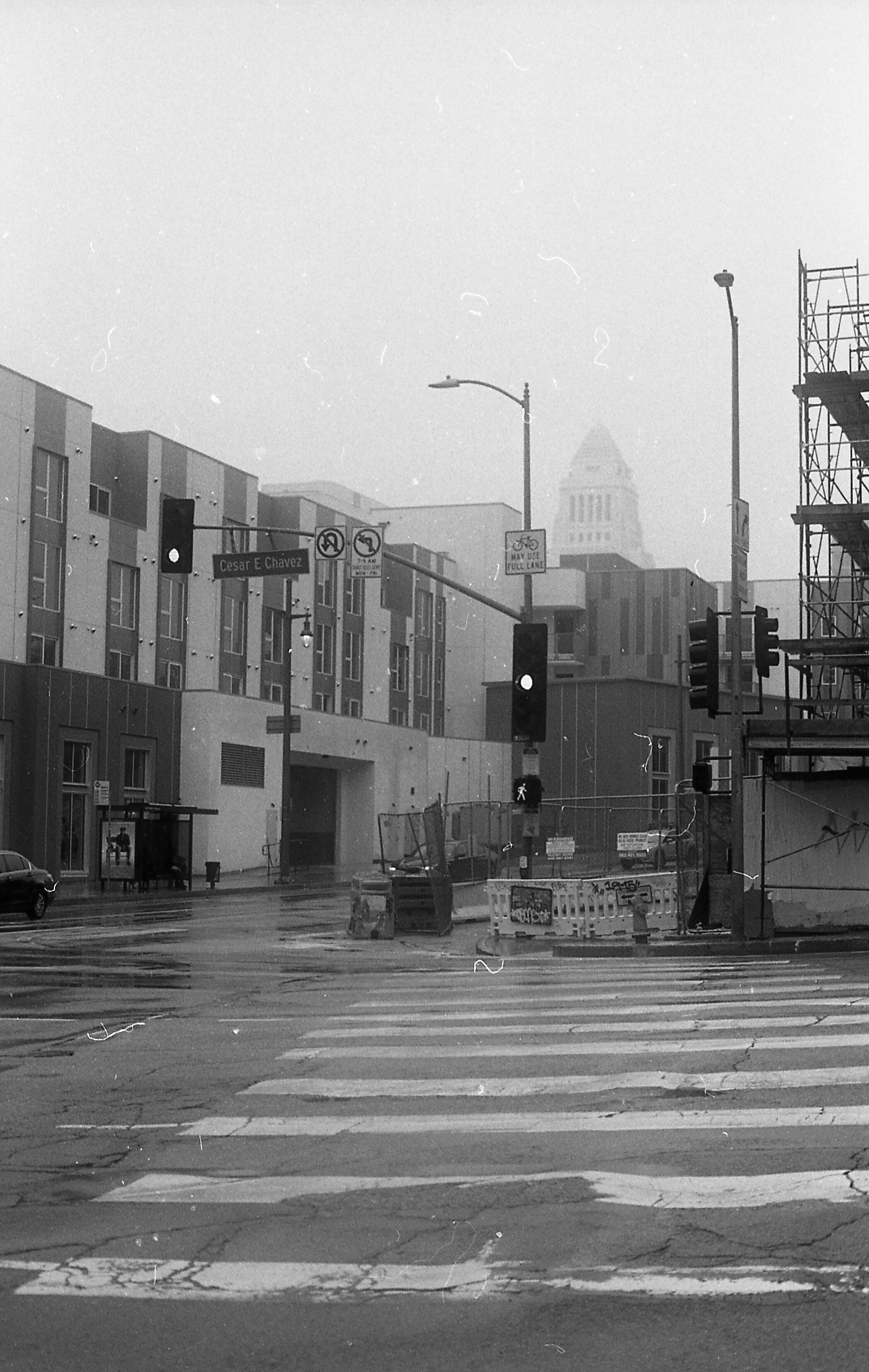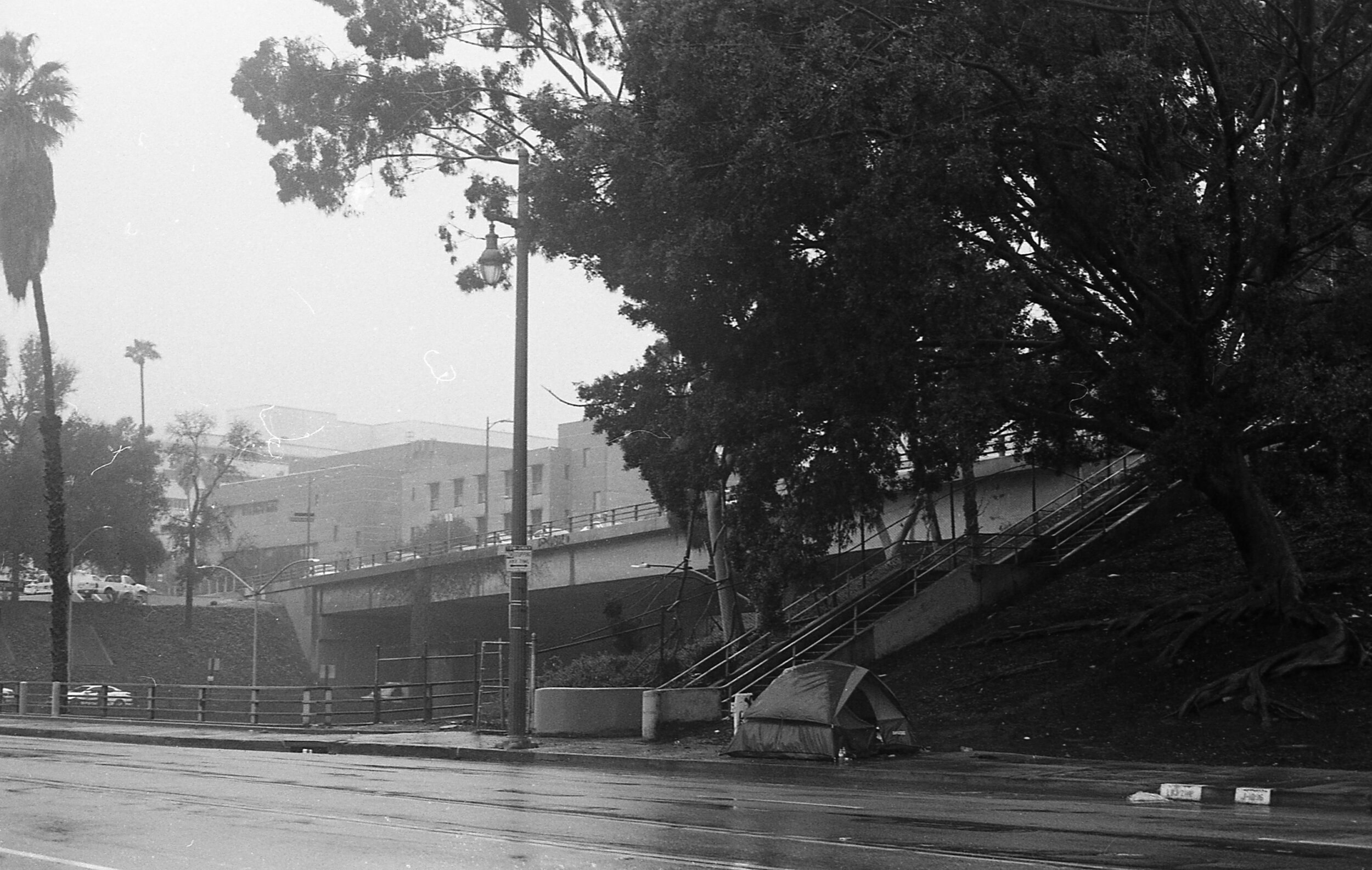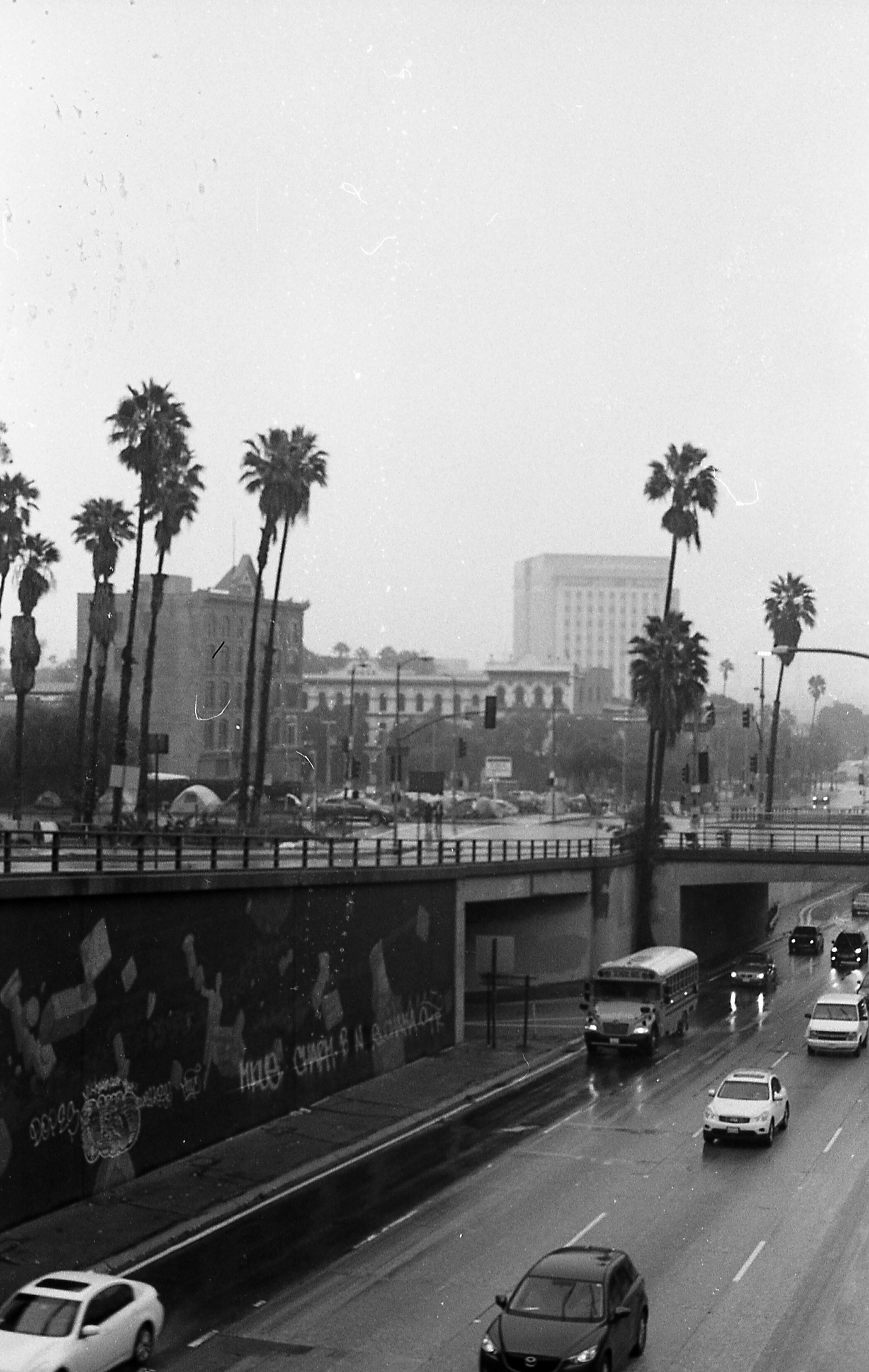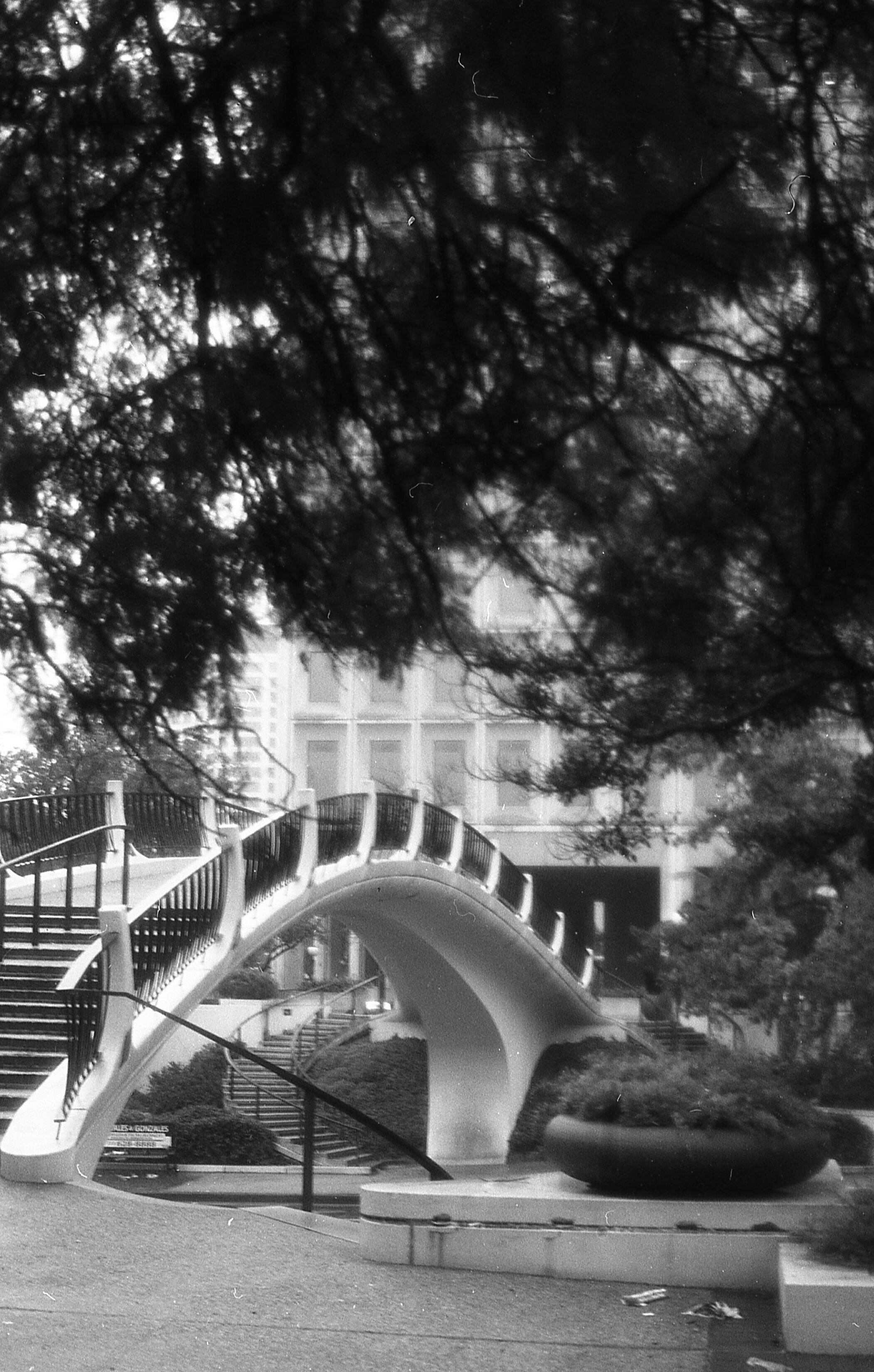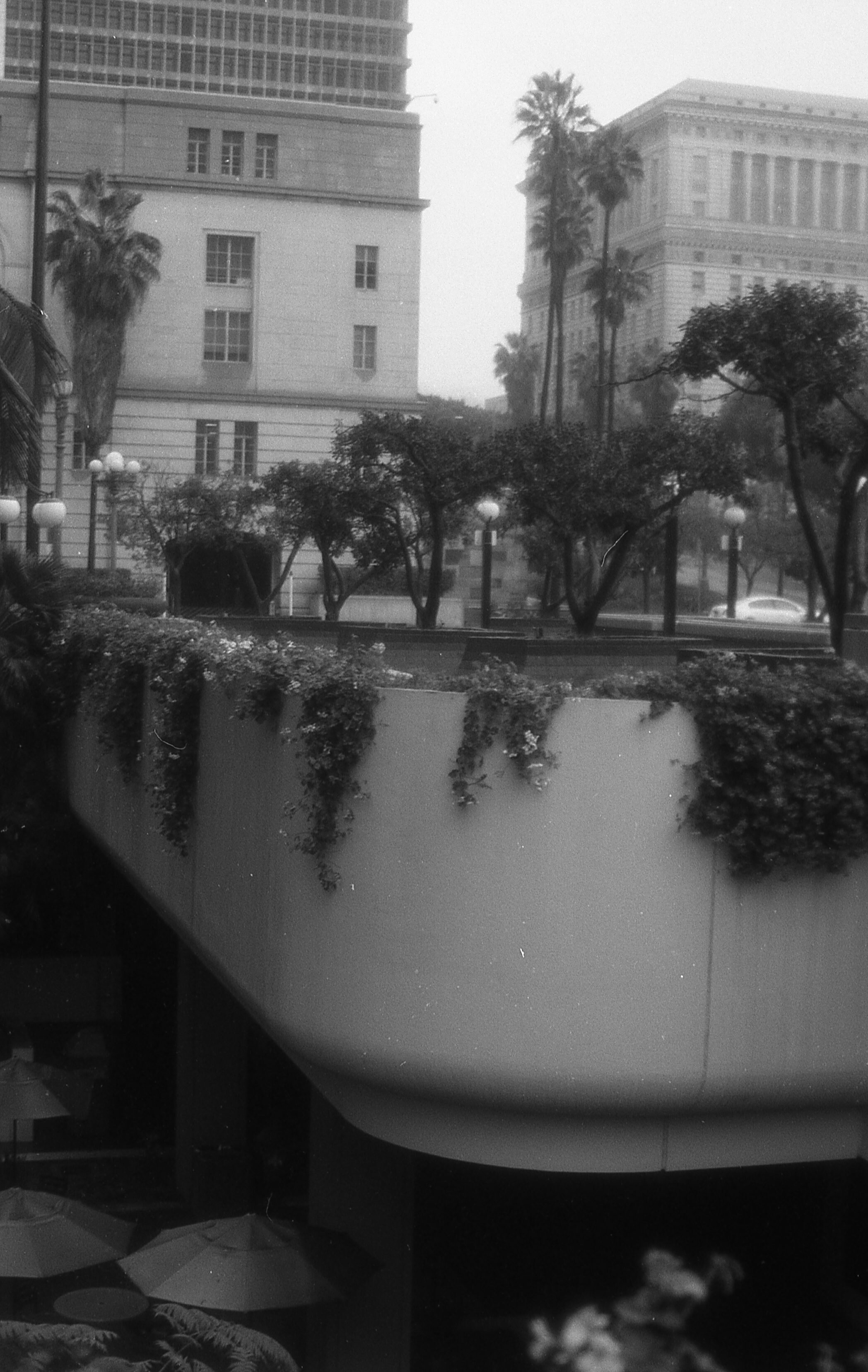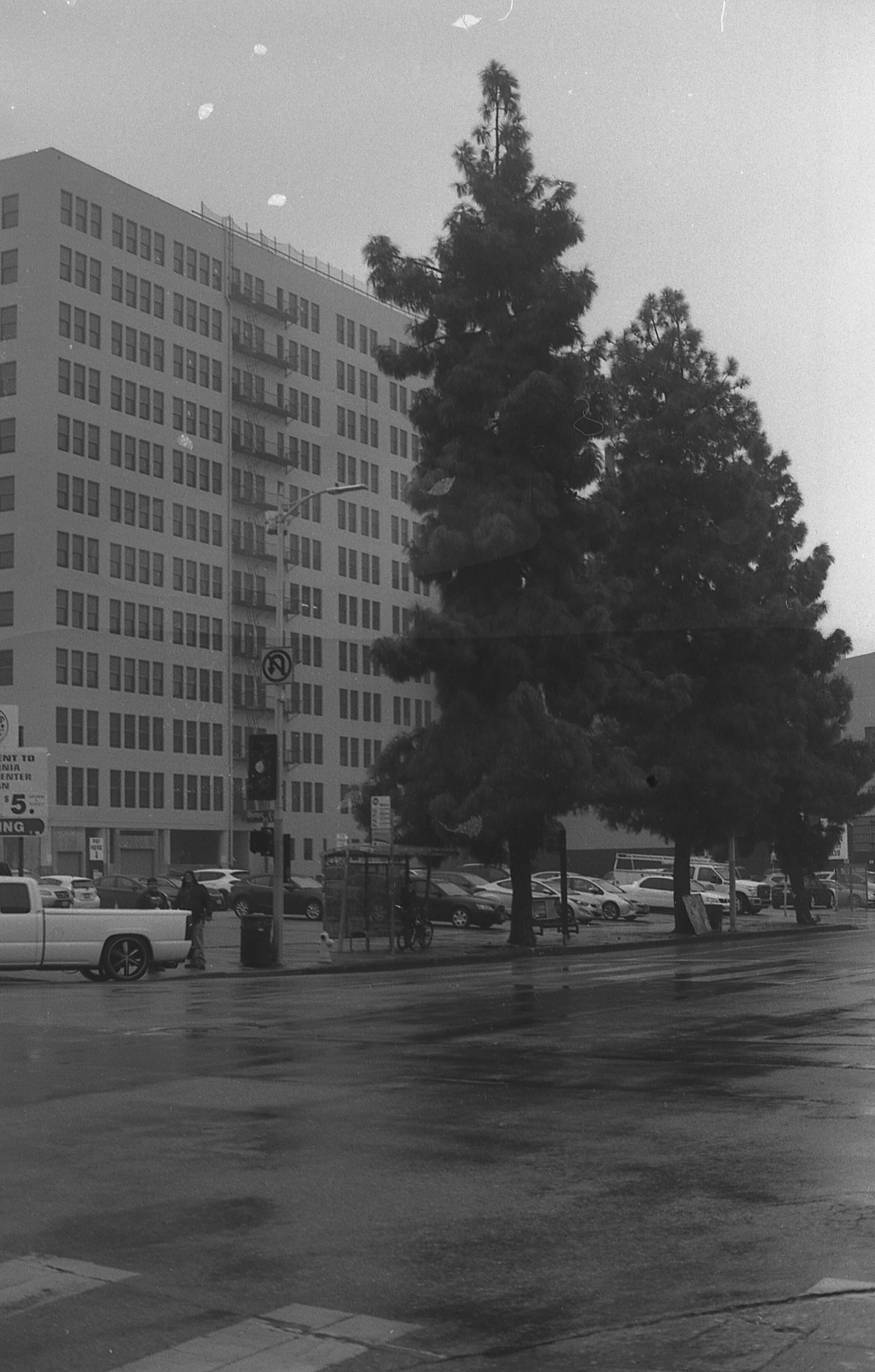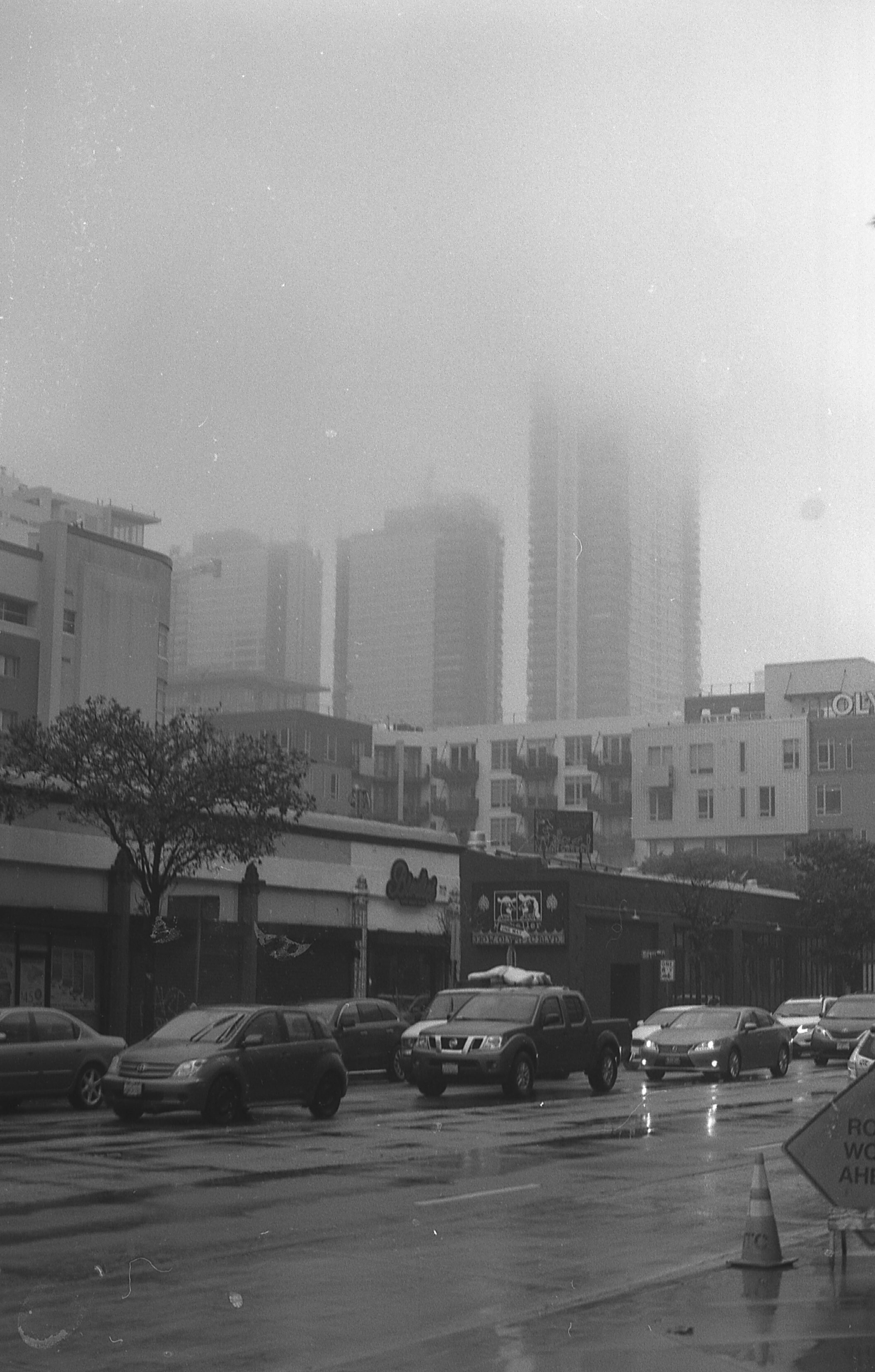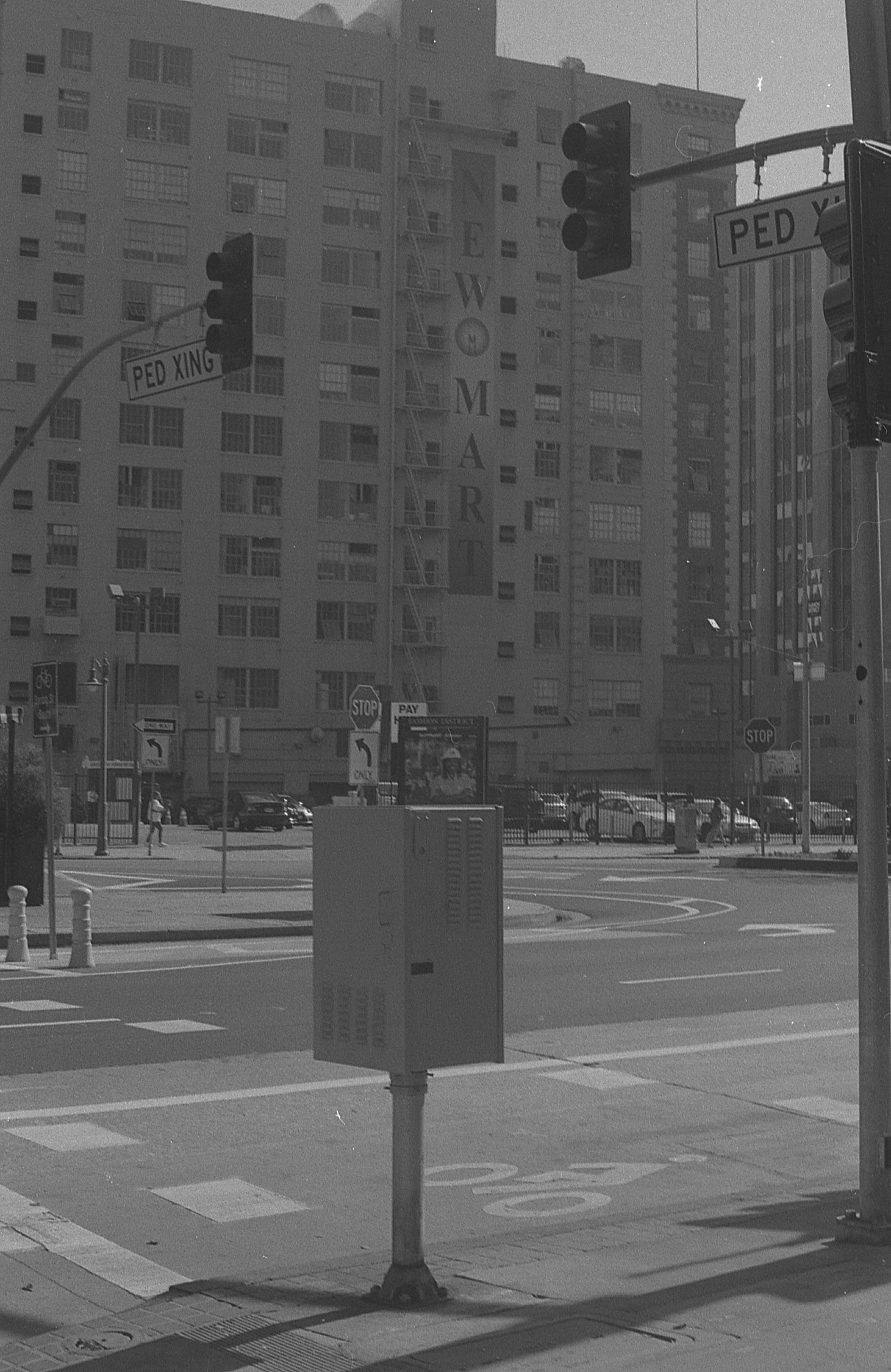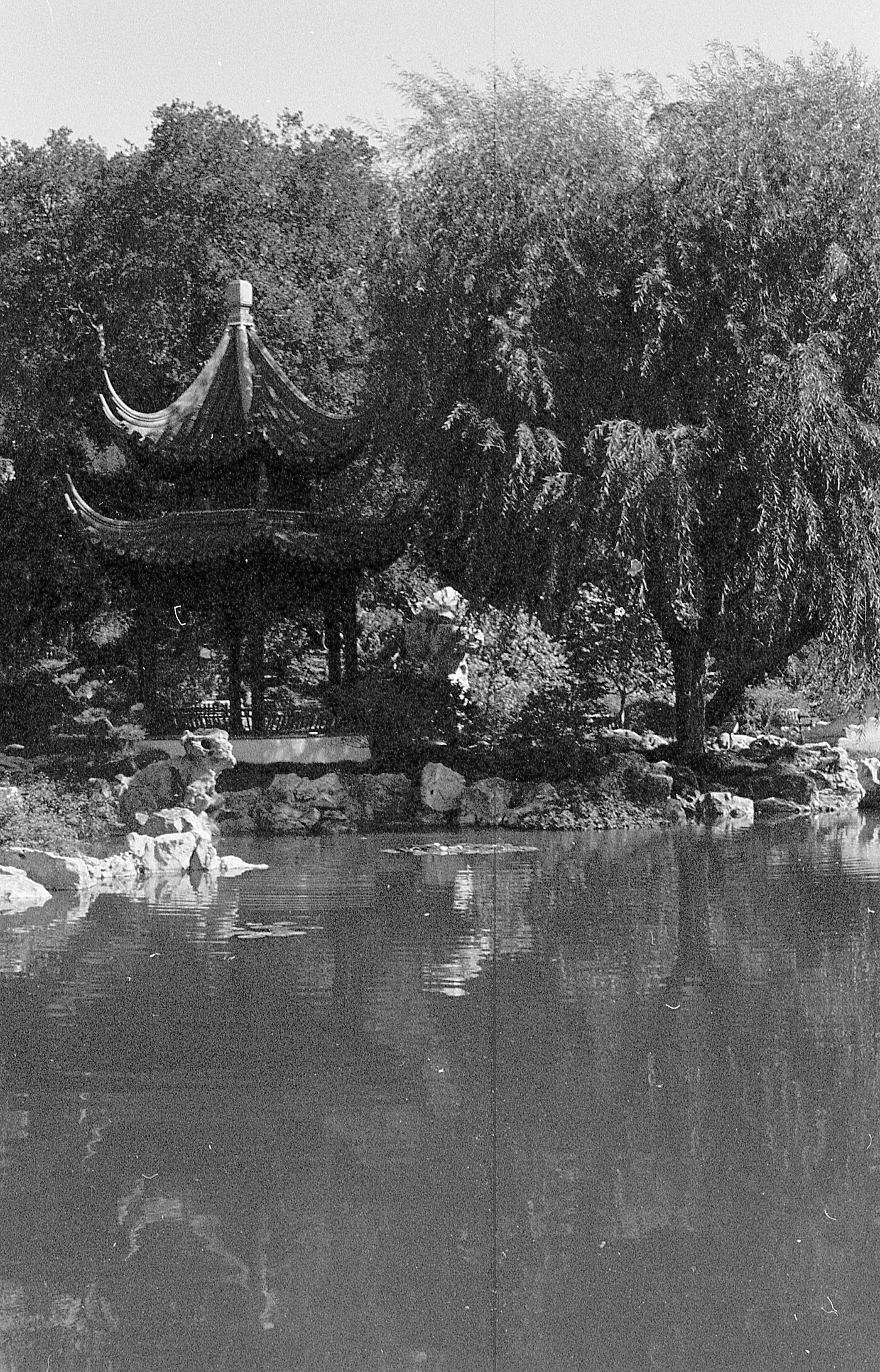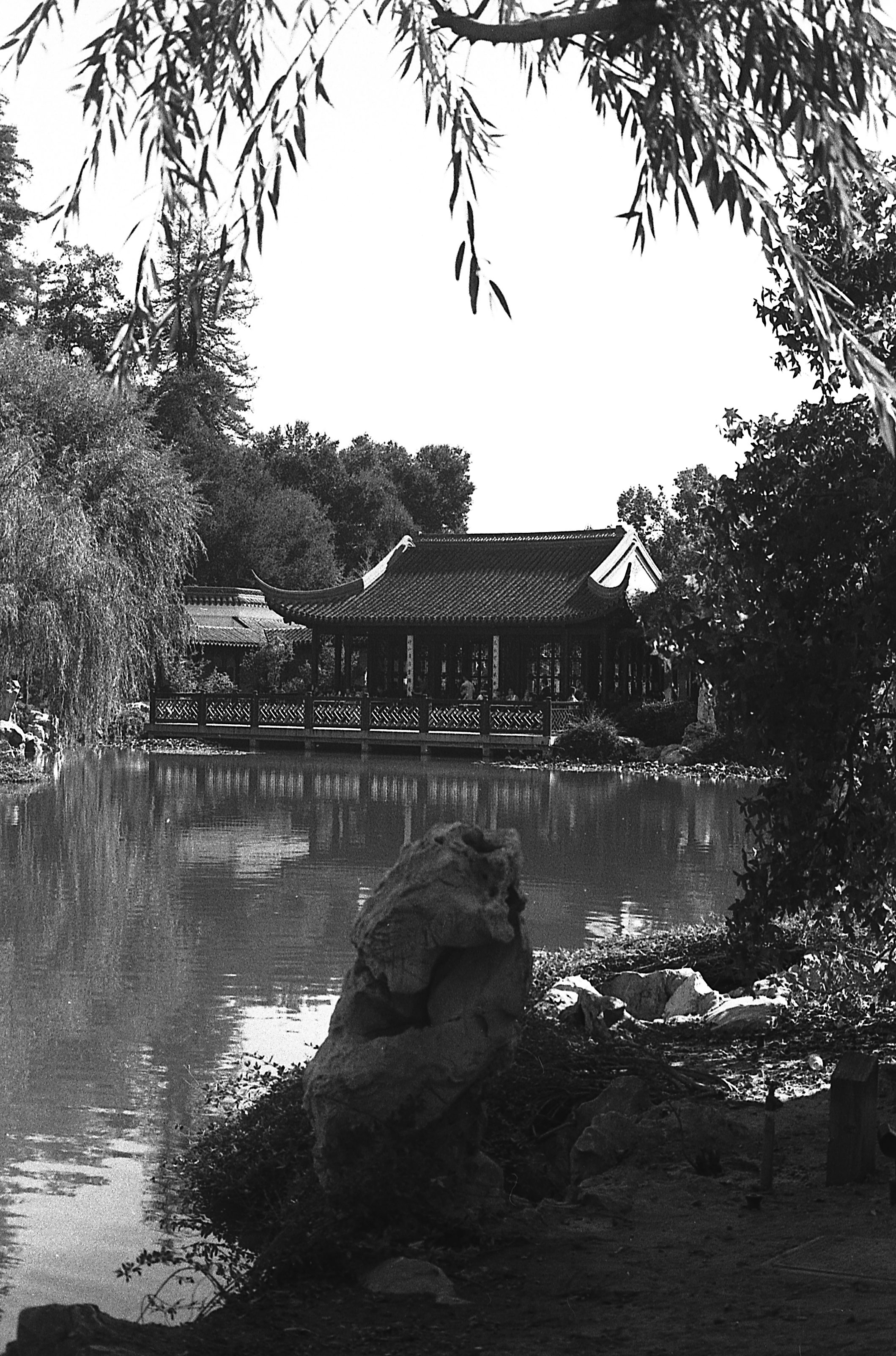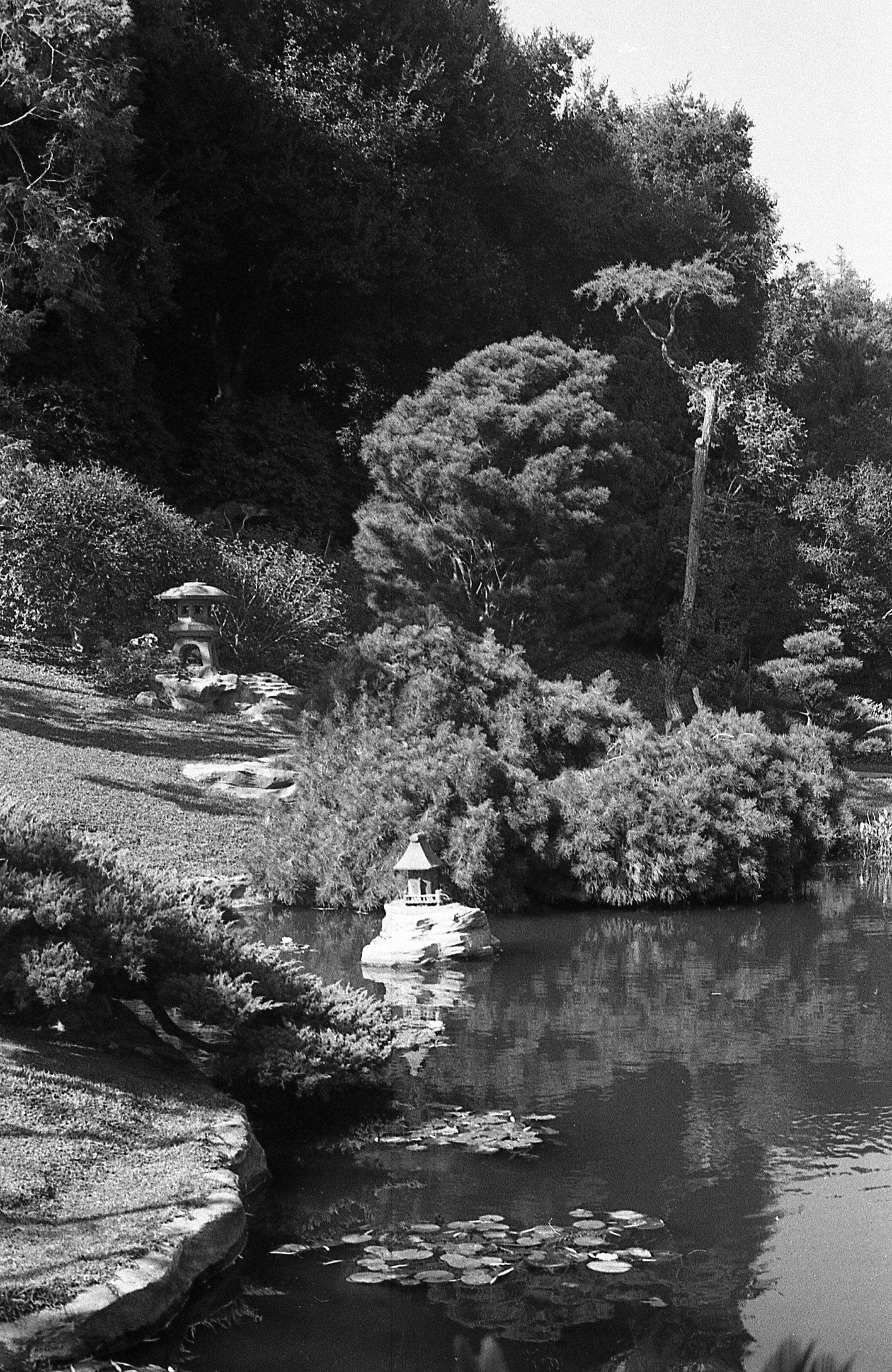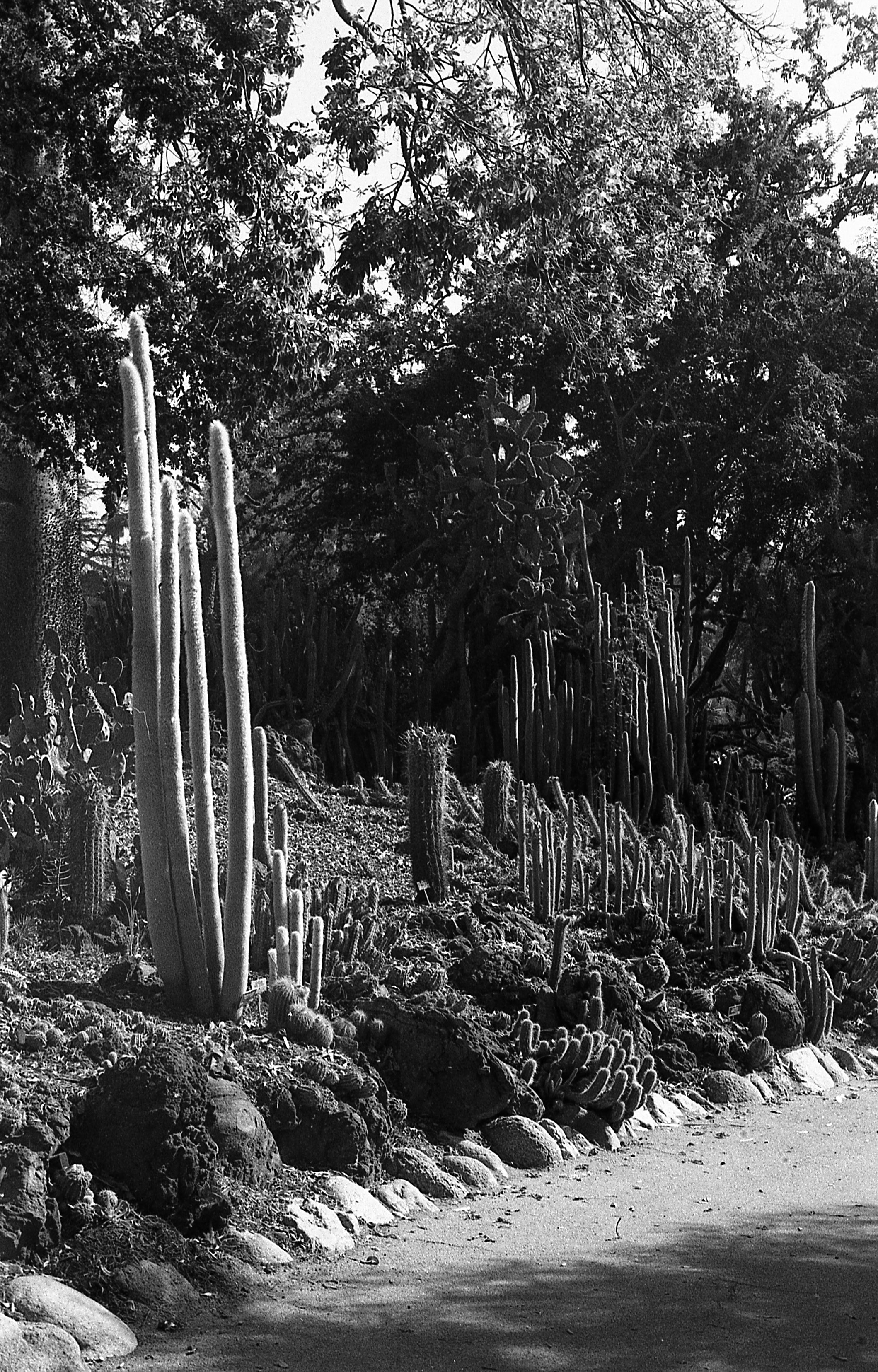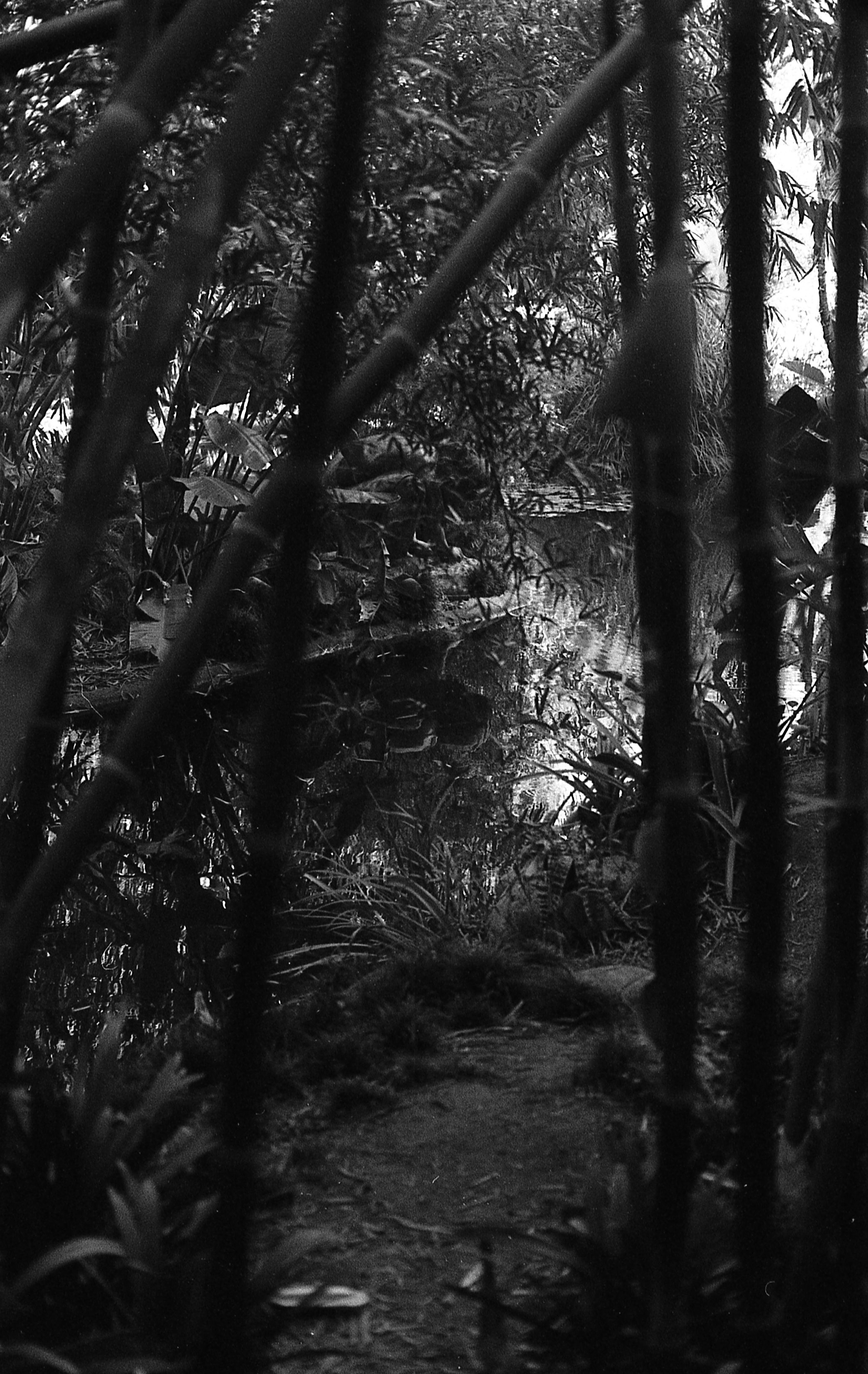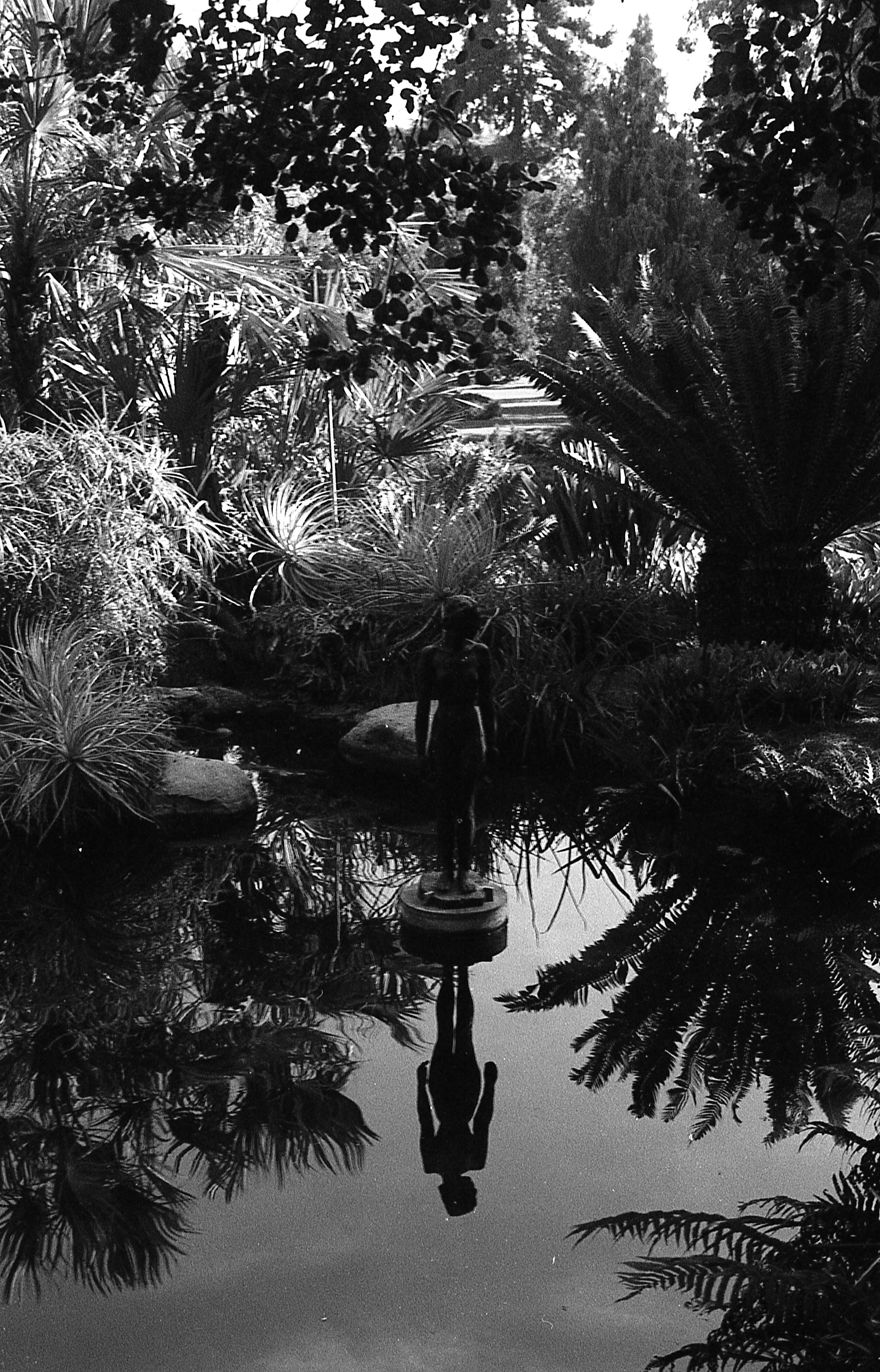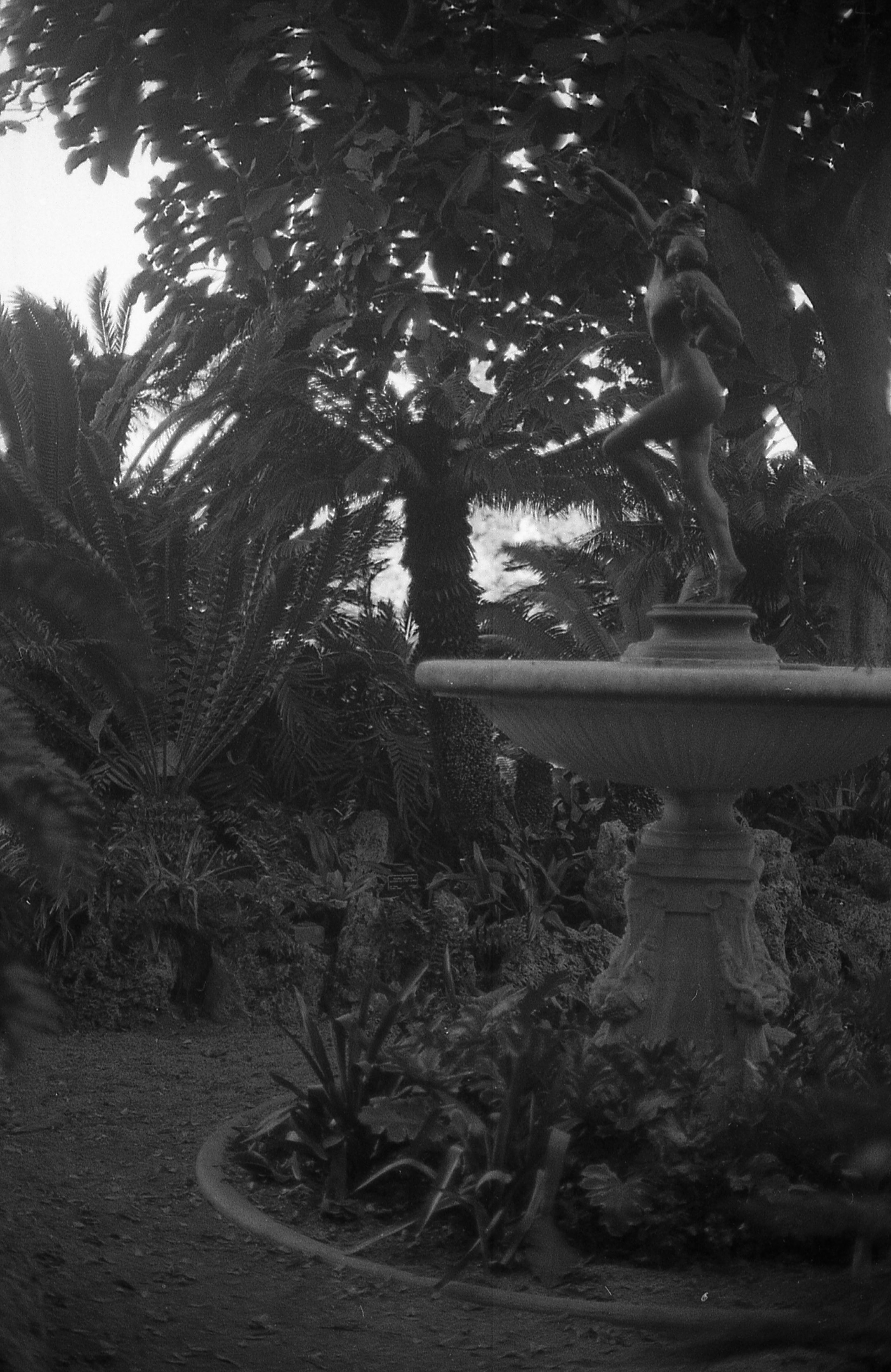Los Angeles 11/18//1/19
My primary mode of image making (yeah, I know it’s cringy to put it that way, or I find it cringy) -- generating work? -- is to go walk around and look or hunt for for sights or landscapes to adequately express both my own feelings and thoughts, with the feeling of the place integrated into that. Sometimes it works sometimes it doesn’t. I’d wager most of what I do ends up getting buried on my hard drive or dumped here -- not because it’s bad, but because I feel like it’s just better viewed as a large dump of images, and it’s not necessarily my “strongest” or most directly competitive work. But I still think a lot of it is neat, and I like to get into the habit of sharing stuff so it doesn’t completely rot away on my hard drive. Also notably most of that day-to-day practice is shot in and around Downtown Los Angeles, so this is maybe two of my more serious, more real sets or studies, on an area I shoot often.
Walk 1: I try and shoot the Bonaventure.
So here’s (I guess a re-do) of part of my Agfapan APX 100 review -- broken into two primary walks. The first walk was with the Minoltina AL-S (I mean another re-do review?) -- up into a part of downtown or the financial district I haven’t really explored too much before -- ideally to get a good shot of the Bonaventure -- but also to kind of explore the corporate parks that seem to crop up around the financial district. I know public space seems to be required for a lot of zoning laws here in Los Angeles, but I’m slowly slipping into the opinion that I’d rather have a real park be easily accessible via direct taxes on those buildings and have it well maintained than some weirdo corporate park that, unless you’re willing to hunt for it, nobody knows exists. Unless the corporate parks are private property that exist for no discernable reason aside from some kind of vanity. It’s a strange phenomena, and I’ve only ever seen it in Los Angeles. Food for thought.
For the camera -- I dunno. I’ve inherited another couple “compact” rangefinders between last year and this one -- I’d wager it’s getting dangerously close to a year since I shot the first batch of photos -- the AL-s is really actually a nice rangefinder given that it’s compact, cheap etc. The frame-lines are pretty accurate (if there’s only one set of framelines is it frameline?) and on top of that the finder itself has breathing room around the lines, which to me, is the single biggest advantage to shoot rangefinder over SLR. There are other advantages, but being able to see what’s around your image while looking through the finder is a huge plus, and it made me second guess a lot of these photos way less than I would normally at that point in time.
The film itself -- on that first trip/walk I know shot at 100 I developed all the Agfa APX 100 in Rodinal 1:50 and pushed to somewhere between 160 and 240 via semi-stand development (agitate normally the first 3 minutes, then 1-2 gentle rotations every third minute) The look is pretty good, or like I like the baseline, but it’s grainer than I’d hoped it would be, or like I wish I’d gotten more grain masking -- though I wonder if that only comes into play via true stand development. Either way, I was happy or proud enough to go see an area near my house (apartment) I rarely if ever actually go explore or see. In it of itself there’s no strong feeling or thought here, but it’s interesting enough to warrant posting up.
Walk 2: the one where I get a cold, but it’s worth it because it never rains here, and I get to capture Downtown Los Angeles in exactly as depressing and cold a manner as it feels, figuratively.
Yeah basically read the title on that one. I dunno. I was saving this and the last one for the megabus I was going to called “bury me in LL Bean” but I’ve nixed that project. It’s super fucking narccistic to think I actually need or deserve a retrospective of the last five years (almost six?). I dunno, I’ve gotten significantly better but it’s not like I’m a big enough deal, even in my own mind these days, to warrant any kind of retrospective.
(APX 100 1:50 to the left, Tri-x 1600/3200 below)
So much belated, this is probably the last chapter of that five year period. Unimportant as it is. I’m sure I need to purge it somewhere. So why not here, on the home of Wasteland Books, which is simultaneously a zine and or idea graveyard for myself, and maybe a platform too. Have y’all bought anything?
Anyway, I tried to keep a consistent profile across the walk, which, after my camera (I was running with the XD-11) got shorted out -- and started having extreme technical difficulties -- I was stuck shooting the built in mechanical shutter at 1/100 and crutched at f/4 -- which while not particularly slow or particularly wide open, is still less control than I’d ideally like to have had. And the camera still went ersatz again towards the end. Notably I did throw in a roll of Kodak Tri-X pushed to 1600 or shot at 1600 and pushed to 3200 (either way in xtol 1:1) in the mix, along with a roll of Kodak T-max 100, developed in rodinal 1:100, in my then totally crippled camera at the very end, because I’d finally burnt the XD-11 to the ground. (Agfapan APX 100 1:50 Below)
You’d think the repair techs at my local camera shop would be happier to see me back as often as I was during that period. Mostly they seemed annoyed Which I guess is also fair -- the XD-11, according to them at least, is pretty miserable to fix.
Again, I encountered more corporate parks on that walk. Or I guess because it’s attached to government buildings, government corporate parks. Just badly designed civic features. Most of my focus was on banal tired construction and the undercurrent streets between downtown and chinatown. This was also before I figured out canned air was a thing, and at this point I can’t really be bothered to re-scan everything, as this is now non-essential or competitive work.
So that’s downtown in the rain, or around the rain. A bunch of good photos, and photos that’d probably otherwise be clipped out. It’s basically just a way for me to show work in progress.
Overall, I like my results, give or take some fallibility. I also prefer the look of one developer/film combo, one lens, etc, over shooting a smorgasbord all at once, but it’s okay here. I do really love the inky black you can pull out of Agfapan APX 100.
If you like this content or even just want to support me please buy something in the shop.
(T-max 100 below)



